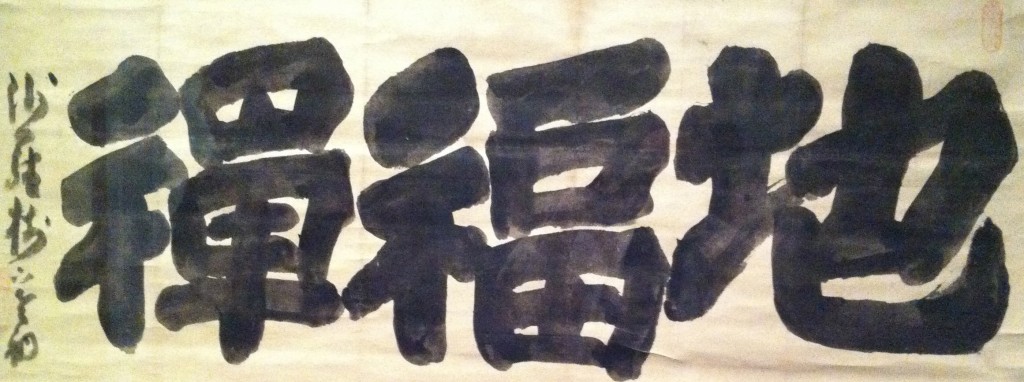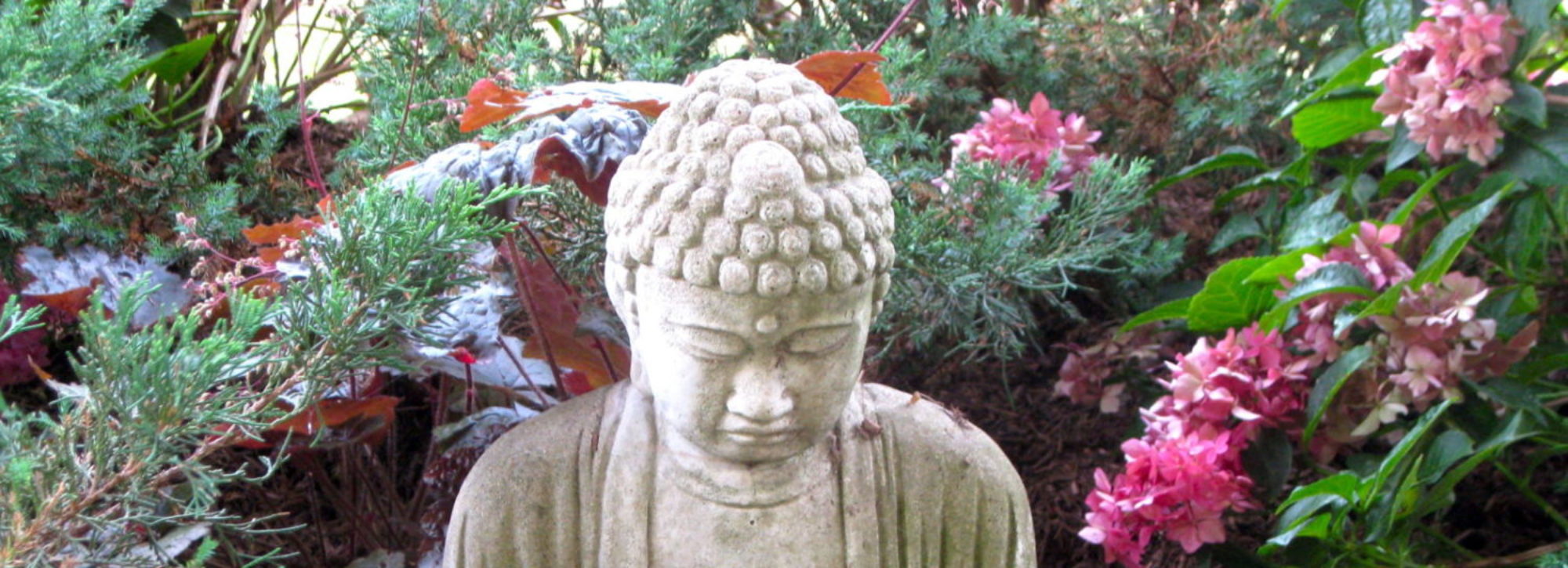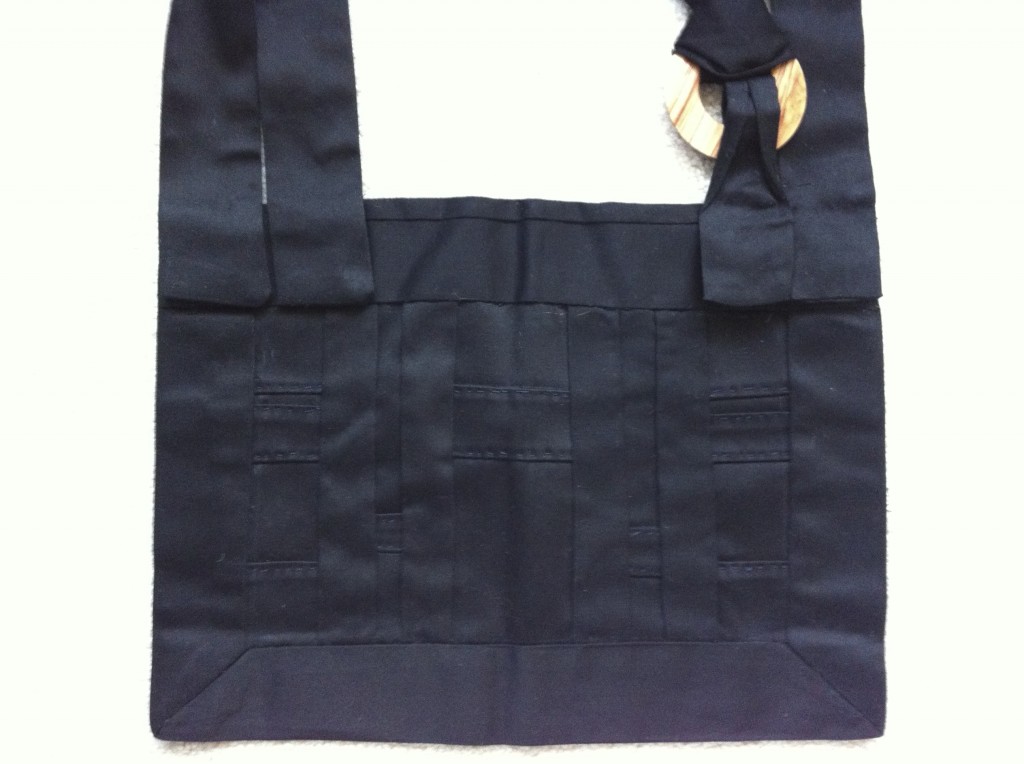
Two years have passed since I first wrote about my intention to receive jukai, the Buddhist precepts, in a lay ordination ceremony. In the intervening years I’ve been studying the precepts with a Zen priest, and sewing my rakusu, the ritual garment that signifies lay ordination. The ceremony takes place in another week after our regular zazenkai, or half-day sitting. It seems a fitting time to reflect back on the process and the meaning of the ceremony.
Two years ago I wrote:
”After fifteen years as a non-Buddhist Buddhist, I’m taking the plunge. I’ve decided to start the path leading to jukai, the precept-taking ritual that means formally becoming a Buddhist in Zen…
It’s not a rational decision. But it feels right. It doesn’t mean I’ll stop being an iconoclast. It doesn’t mean I’m drinking the Kool-Aid or joining the club. It doesn’t mean I think Buddhists are better than anyone else or that everything in Buddhism is true. It does mean I’m ready to say ”this is my path,” and I’m ready to make a deeper commitment to it, rather than always standing a little bit outside.”
Those words remain germane today.
The process of exploring the precepts involved a constant probing and questioning, some of which worked its way into blog posts here and here. I struggled to interpret the precepts in a way that was personally meaningful. The Buddha called on us to be lamps unto ourselves, and the understanding we arrive at must always be our own, not some worn out hand-me-down.
Take, for example, the precept against discussing the faults of others. I could see the point to it: abstaining from hurtful gossip, examining the beam in one’s own eye before condemning the mote in another’s. We all know people who prefer to cast stones rather than consider their own contributions to a problem.
But the precept has its dark side. It can easily become a rationalization for evading our responsibility to bear witness to evil, or counsel someone against causing harm. The real question is, what’s our motivation for discussing someone’s faults? If we can honestly say that we’re motivated by our desire to help, and that we’ve worded things in a way that’s likely to be both skillful and timely, where’s the problem? The precept, as I interpret it, calls for self-examination, mindfulness, and the employment of skillful means, not abstaining from any and all criticism, whatever the case may be. Zen has always taught us not to be bound by words and letters, but to discover the truths that language points to, but in the process, partially obscures.
Each of the precepts stands in similar need of clarification and interpretation.
Even one so seemingly simple as abstaining from killing.
Not killing? Ever? What should I do about termites in my house? Can I use antibiotics when I’m suffering from an infection?
Nothing is ever simply black or white.
The precepts aren’t absolutes, but beacons guiding us to proceed with caution and compassion, mindfulness and heedfulness. At their core are the familiar Buddhist admonitions to come from a place of integrity, care, and non-harming.
The sewing of the rakusu, as anyone who has sewn one can attest, was a bear. You can see the sewing instructions here. Sewing was a brand new skill set for me. I had to sew, pull the stitches, and resew every seam several times. Pieces had to be cut and recut, pressed and re-pressed. They say it takes the average person about five weeks to sew a rakusu. It took me the better part of a year.
Is it perfect? No. It’s like my life: not perfect, but an honest effort.
The beautiful wooden ring connecting two of my rakusu straps was handmade by the Venerable Kobutsu Malone who lives up in Maine. Kobutsu is the Rinzai Zen priest responsible for setting up the Shimano and Sasaki Archives documenting the unethical behavior of two well-known Zen masters residing in the West. He also served for eight years as a volunteer Zen priest at Sing Sing, teaching the Dharma to inmates. Kobutsu’s ring helps remind me that Zen practice is not about bowing to authority, but about standing up for the truth of one’s life. It also reminds me that our practice is not for ourselves, but is dedicated to all beings.
The byline for my next post will include my Dharma name along with my given and surnames. My preceptor will present it to me at the jukai ceremony.
Don’t let the name change fool you. It will still be just me.


Welcome to the Dark Side! And congratulations though I’m not sure that’s what I should say. Mostly it’s “welcome to always challenging yourself to be as good as you know you can be.”
I sewed the back of my rakusu out of a napkin brought across the Saskatchewan fields by my mentor’s grandmother. It reminds me of the powerful lineage that flows through each of us.
It is a privilege to be your friend – regardless of the bib.
Thanks for the welcome, Lynette. It’s a privilege to be yours as well. Ever onward!
Congratulations and best wishes.
A line I have found useful was: Just because you are indispensable to the universe does not mean the universe needs your help.
Try not to be too helpful. 🙂
Thanks for both the best wishes, and the help! 😉
The Japanese say, Sachiare! That means Good Luck! All the Best! As you sink your roots deeper into the soil of Buddha-dharma.
Domo arigato, David-san!
Gassho!
Thanks, Daniel!
Sincere thanks, Seth, for posting the picture of your Rakusu and your thoughts about the process of making it. Much like your story, after 15 years of being a lay-practitioner of Zen Buddhism, I’m taking the precepts next month. So I’ve doing my best to sew my rakusu the past months, and it’s coming along but I’ve been having some anxiety about all my lines not matching up perfectly on the front, etc. I think your line about how “it’s not perfect, but neither am I” completely sums up the way I’ve come to see it as well. Thanks again for your openness in this blog post, meant a lot to me.
Andrew, congratulations on your Jukai, and thanks for your comment!